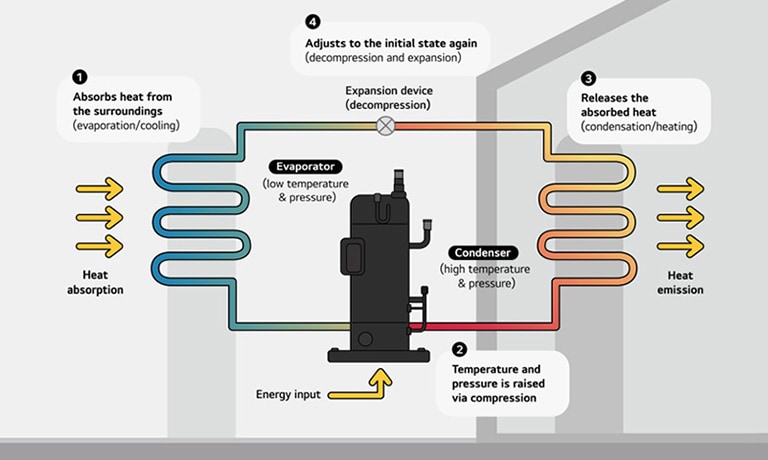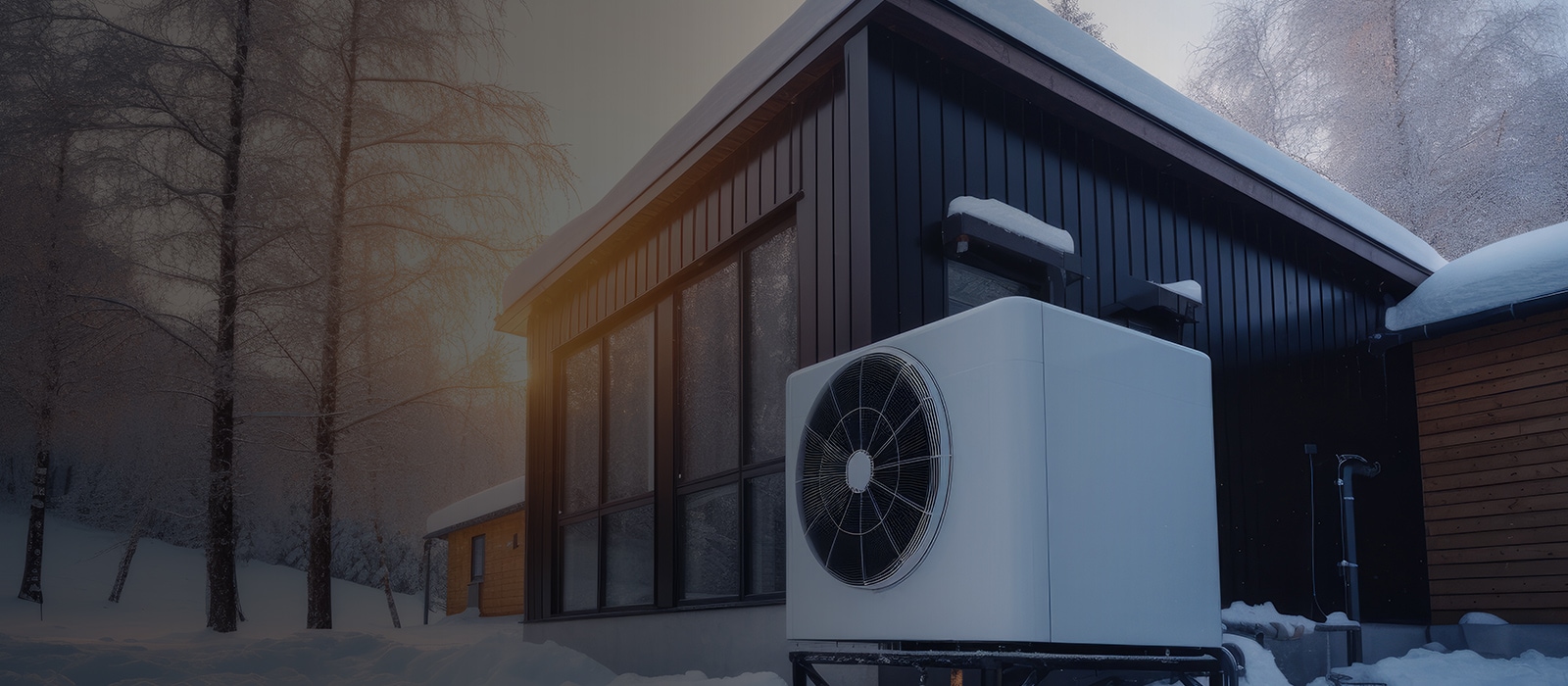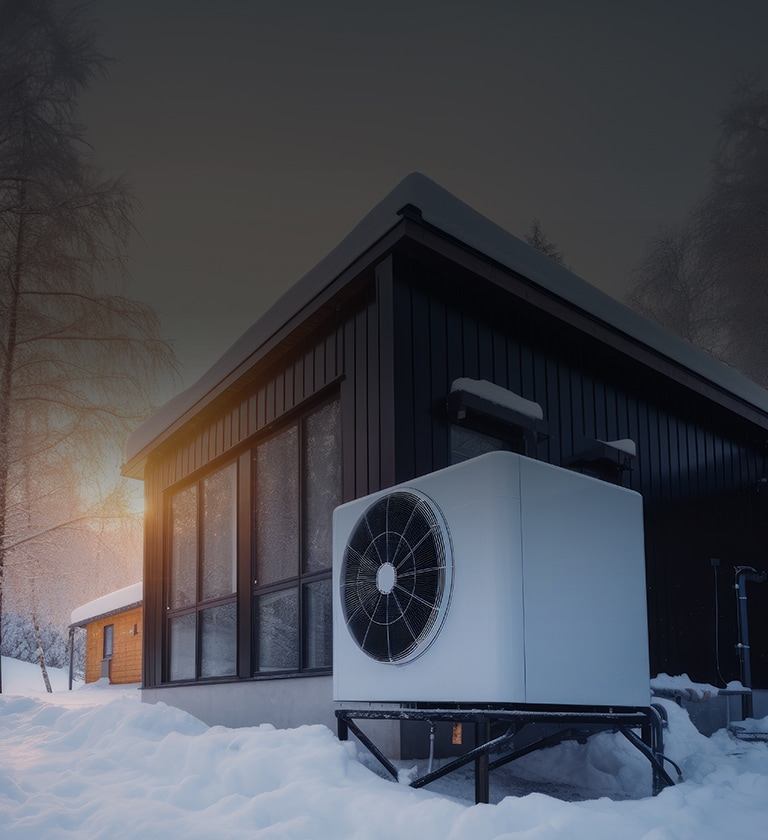-
Over the past few years, the heat pump market has shown record-breaking growth with over 3 million units sold in 2022 in Europe. New research has indicated that the European heat pump market is set to grow at a CAGR of 18.4% between 2023 and 2032.
With the hike in gas prices and skyrocketing fuel prices coupled with Europe’s quest to minimize carbon emissions as a part of the Green Deal and REPowerEU plan; Europe’s policymakers have turned to heat pumps to replace conventional gas boilers and heaters. Heat pumps are the only long-term answer to the energy crisis and Europe’s aggressive zero carbon net neutrality campaign.
Europe will continue to be a promising market for heat pumps. In fact, lucrative offers and subsidies from regional governments in Europe for installing heat pumps is encouraging European consumers to change how they heat and cool their homes.
-
Q. What is a heat pump?
Heat pumps and devices that transfer heat energy from one place to another place. Heat pumps do not generate any heat energy on their own instead, they just extract heat energy from their surroundings, amplify it and transfer it to the desired place. They necessitate electricity to run and transfer heat through refrigerant to provide heating or cooling all year round.
Heat pumps are not just for heating, they are equally efficient at cooling. In winter, the heat from the outside environment is trapped by the heat pump, processed, and then transferred indoors; whereas in summer, the cycle is reversed, and heat is absorbed from indoors and discharged outdoors.
Heat pumps consume significantly less energy than traditional heating systems making them a cost-effective alternative. Heat pumps are not only excellent for heating applications but for cooling too.


-
Q. How does a heat pump work?
Four processes are essential to the operation of any heat pump: evaporation, compression, condensation and decompression.
In an AWHP (Air-to-Water Heat Pump), the first step in the heat pump cycle is the absorption of heat from the surroundings in tubes filled with refrigerant gas. The gas then passes through a compressor which increases its pressure and temperature changing its state from a gas to a hot liquid. The hot liquid is then transferred to a heat exchanger that heats water or heats room. Finally, the refrigerant then transitions back into a cold gaseous state and resets the refrigerant cycle.


-
Q. Which compressors are used in heat pumps?
A compressor is one of the most important parts of a heat pump. Since compressors generally have a great impact on a heat pump’s performance, it is important to select a compressor that matches your system’s requirements.
Since compressors have a great impact on a heat pump’s capacity, noise and vibration problems, a compressor should be selected considering its performance in these three areas.
Two compressors that are considered a popular choice for heat pumps are rotary and scroll compressors.
Scroll compressors have typically 50% less load than rotary compressors leading to alleviated noise and vibration issues. Lesser vibration means the capacity of a scroll compressor is expandable.
Rotary compressors are better for businesses where cost is a major concern. In rotary compressors, the number of parts is fewer and the working mechanism is simpler compared to scroll compressors. For this very reason, rotary compressors are more competitively priced compared to scroll compressors.


-
Q. How can you enhance the efficiency of an AWHP?
One of the biggest myths about heat pumps is that they do not function optimally in extreme weather conditions. Air-to-water heat pumps can efficiently work in harsh winters.
A compressor can either increase or decrease the performance of a heat pump. A poorly designed compressor can lower the efficiency of the system, especially in winter when the temperature is low. Low temperature means low evaporation temperature and low circulation flow inside the cycle reducing the system’s performance. Therefore, it is necessary to select a compressor and design a cycle that can produce a sufficient heating performance at a low outdoor temperature.
In order to enhance heating performance at low temperatures you can either increase discharge pressure or increase circulation flow rate in the cycle. In order to increase the heating capacity, a compressor with a high compression ratio must be used as a method of increasing the discharge pressure. This will enhance the heating capacity of the heat pump.


-
Closing remarks
Heat pumps have gained traction in the last few years, especially in Europe. With several heat pump manufacturers trying to dominate the heat pump market in Europe, heat pump manufacturers are looking for ways to give their heat pumps a competitive edge and a well-designed compressor is the answer to that.
-
"The information contained in the article is released by LG Electronics and may not be used for personal work. It may not be copied, reproduced, modified, decompiled, or reverse-engineered into any other work without prior permission from LG Electronics."
-
*Products and solutions may vary according to country and operating conditions.
Please click the 'INQUIRY TO BUY' banner below to contact LG Sales Team
for further information on solutions and products.






